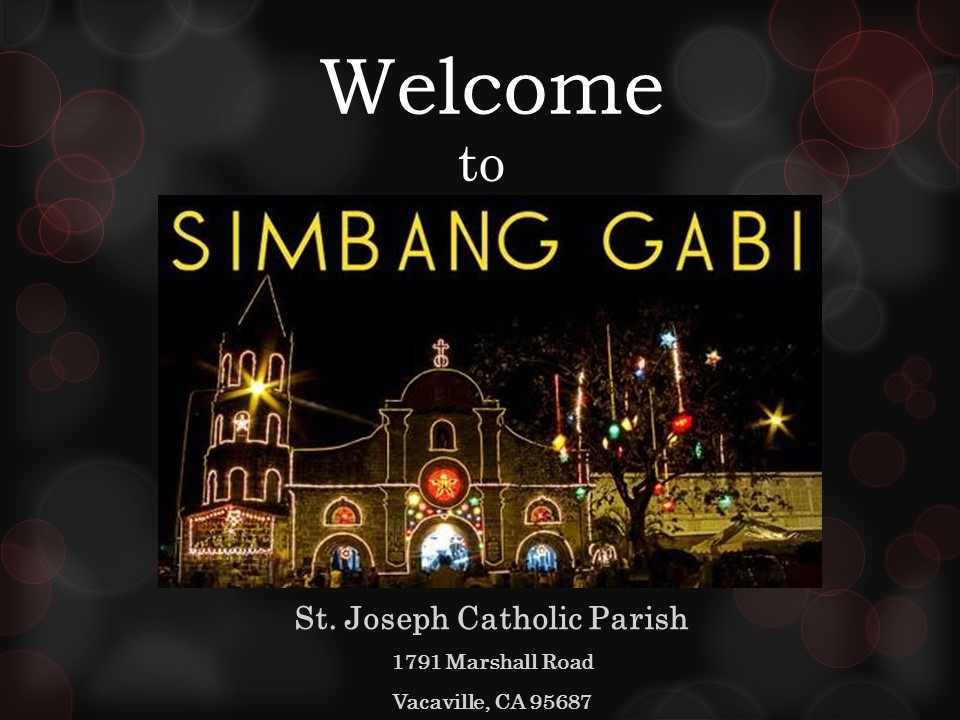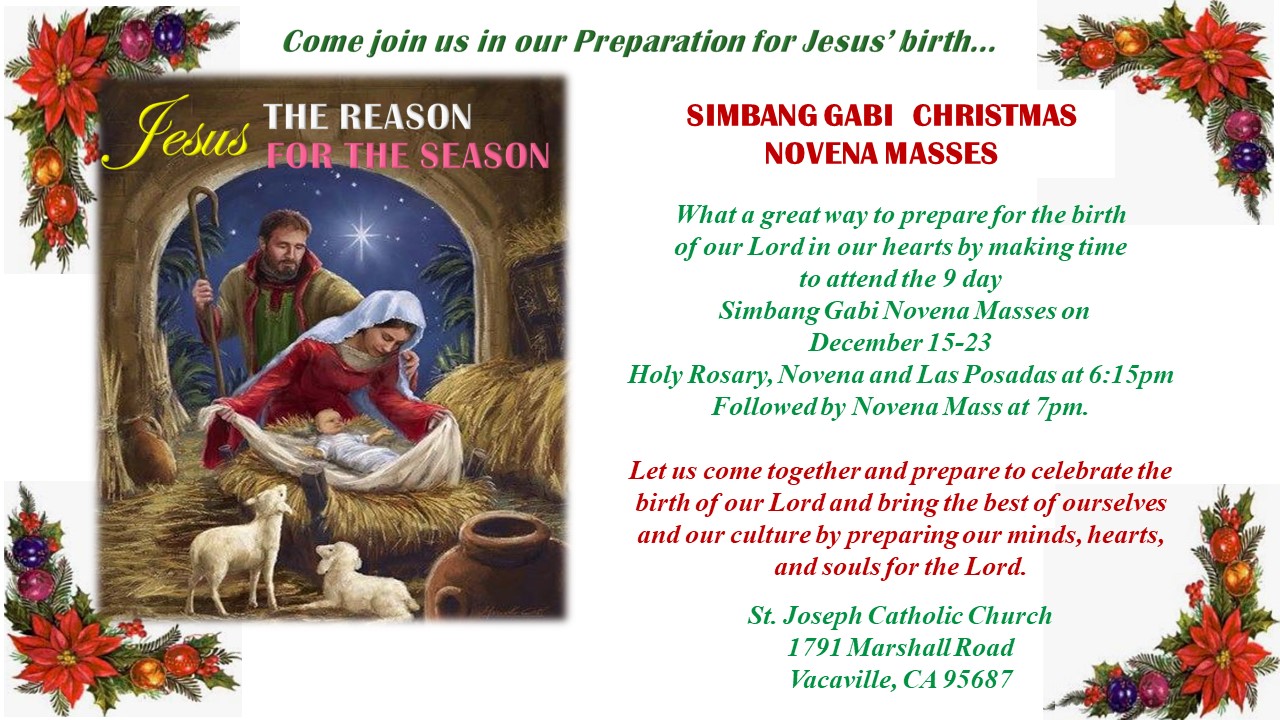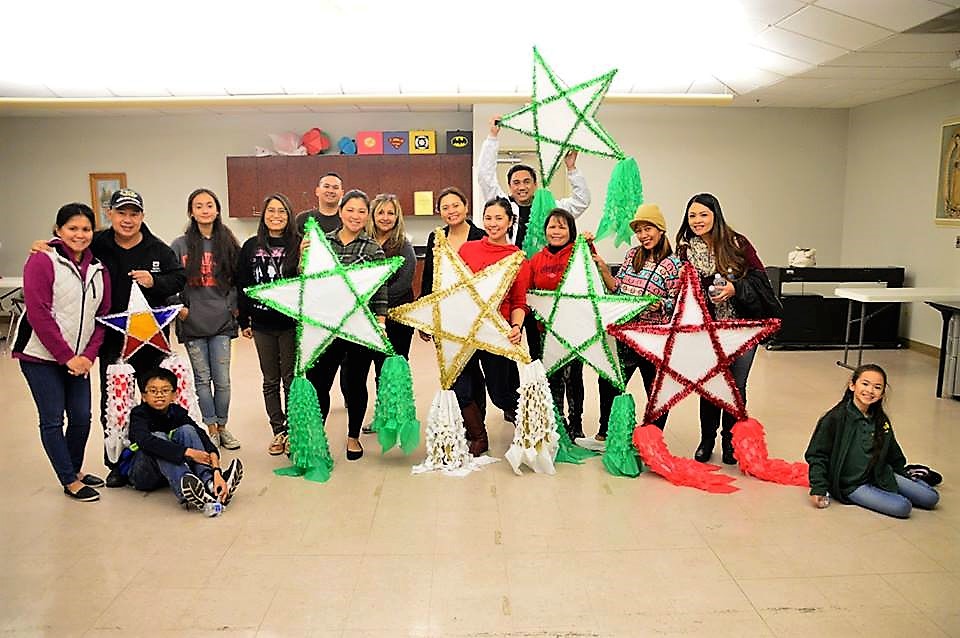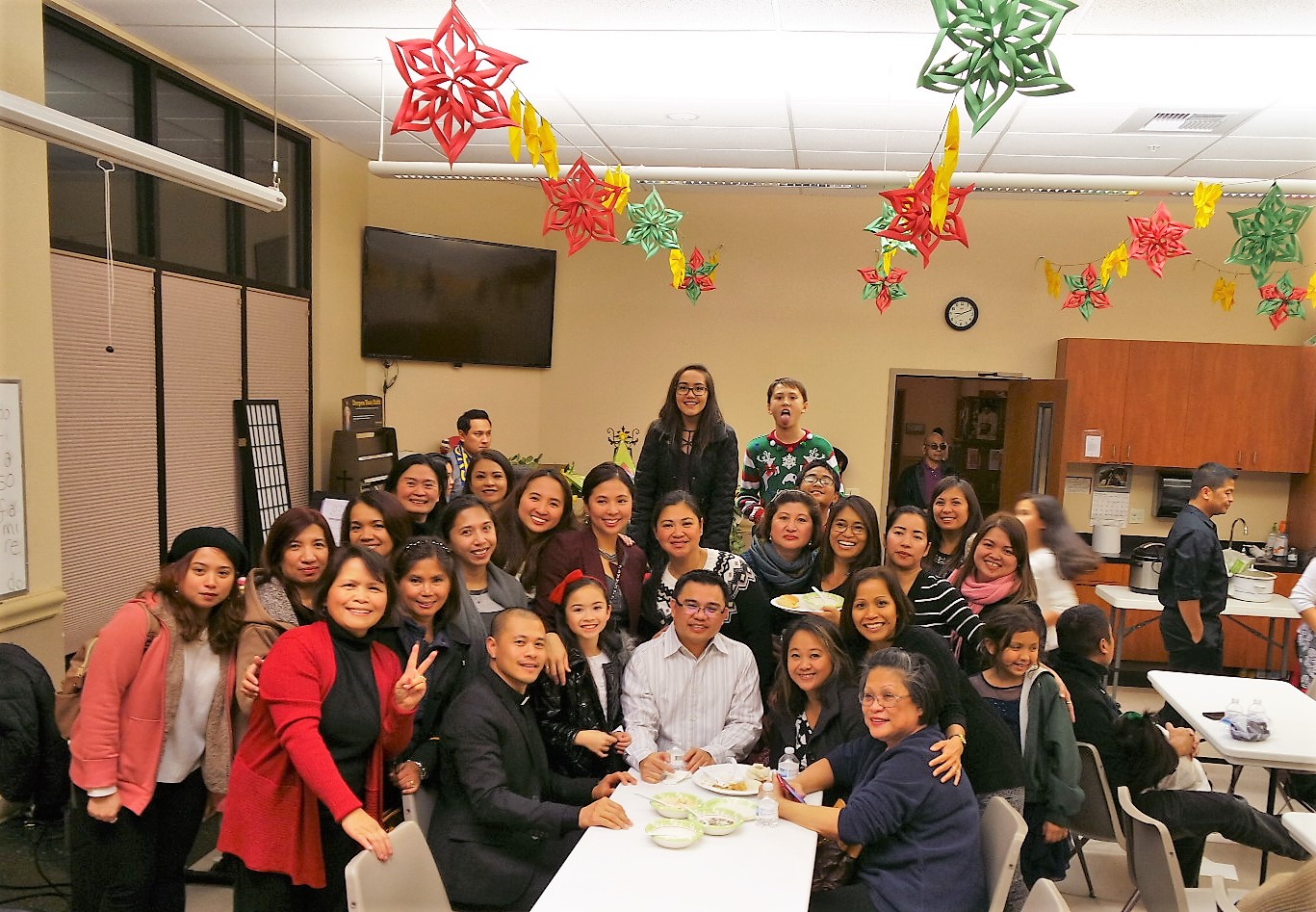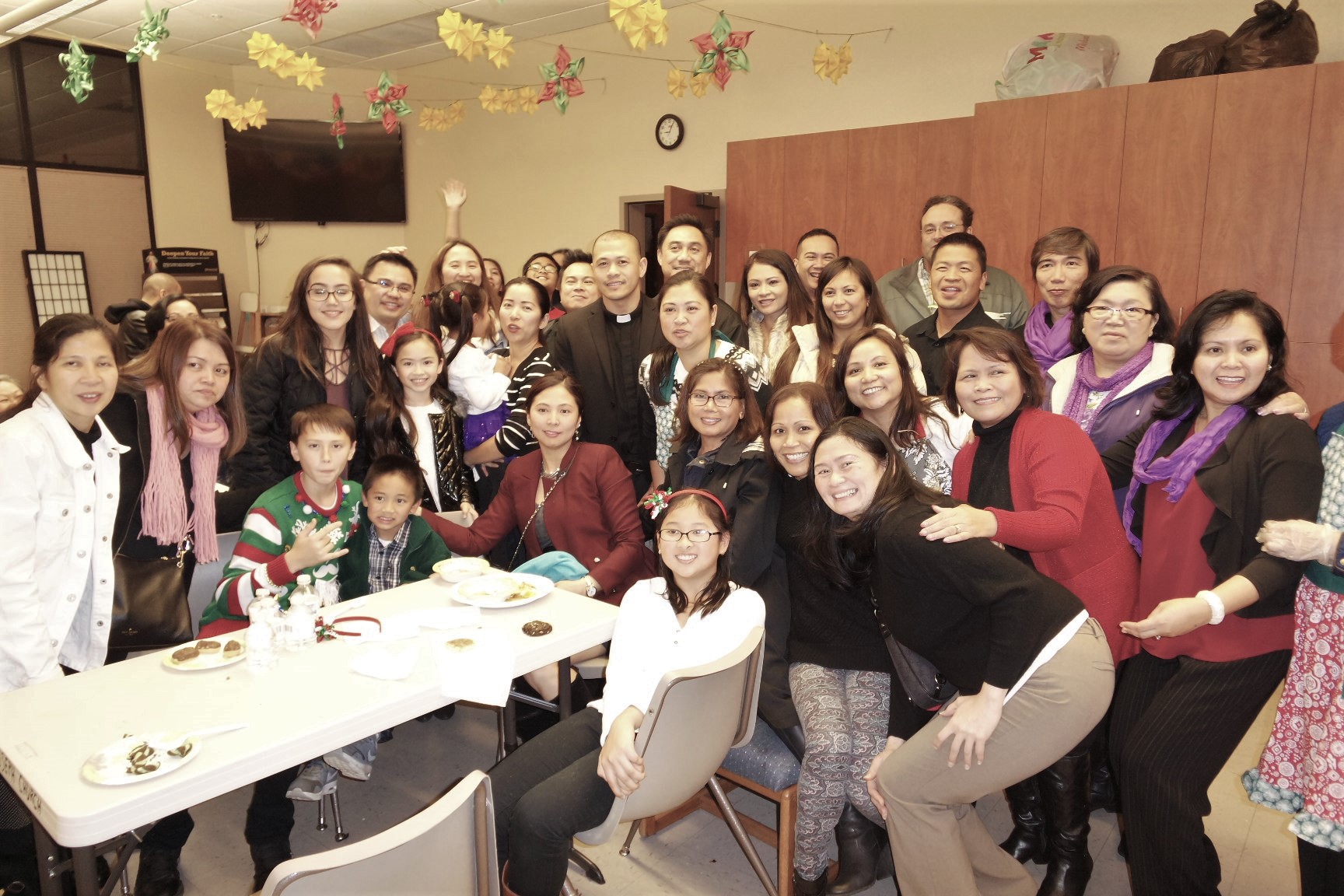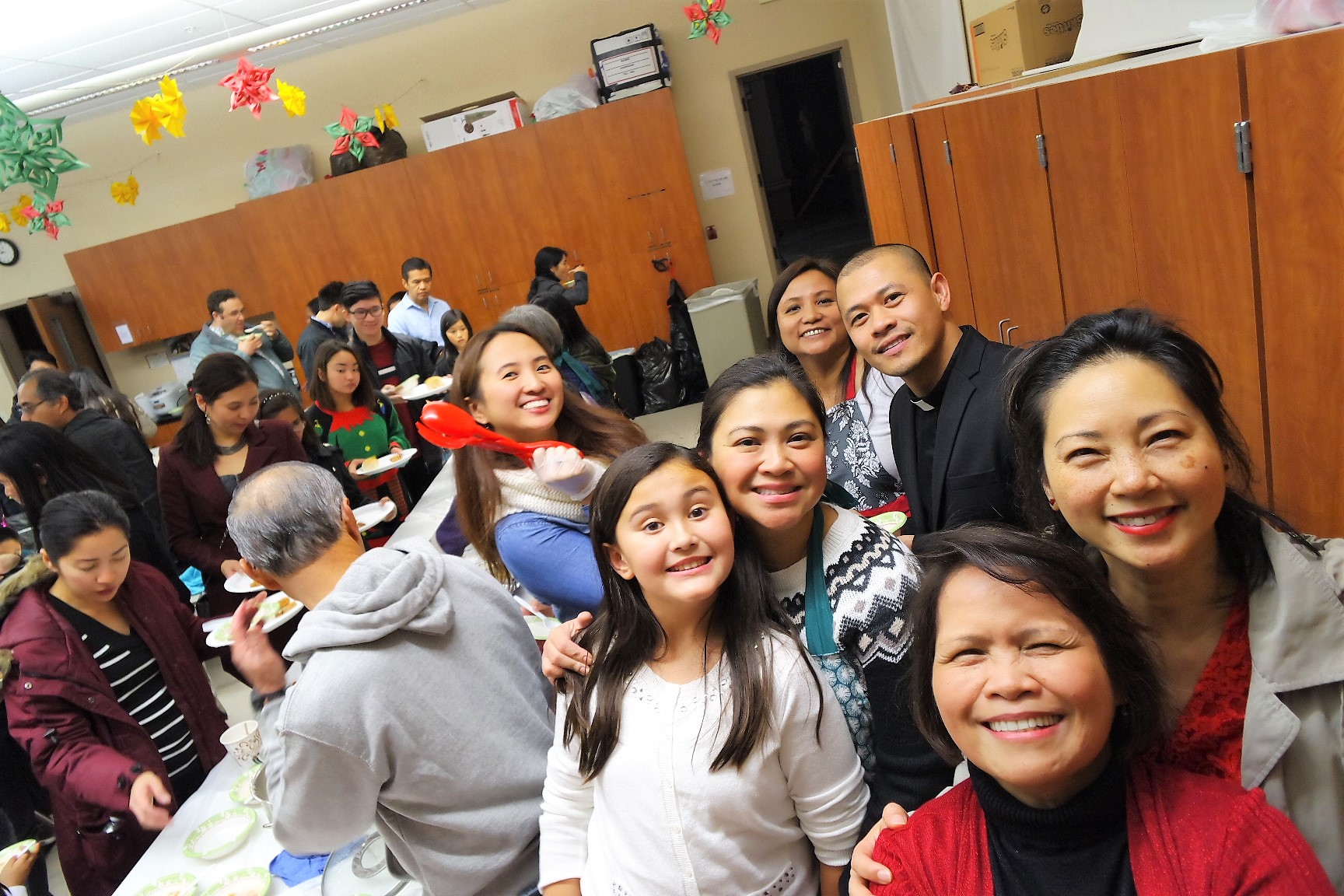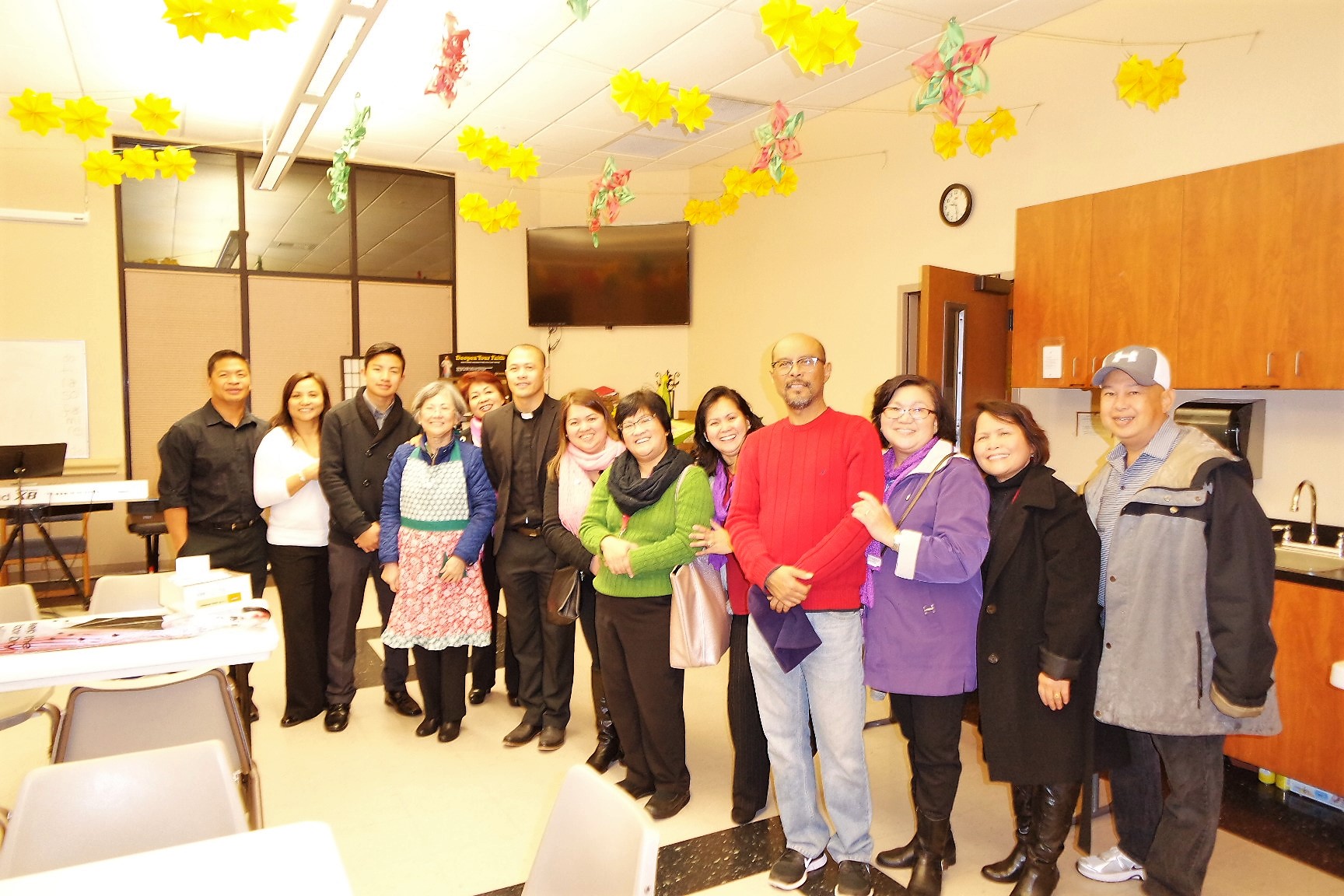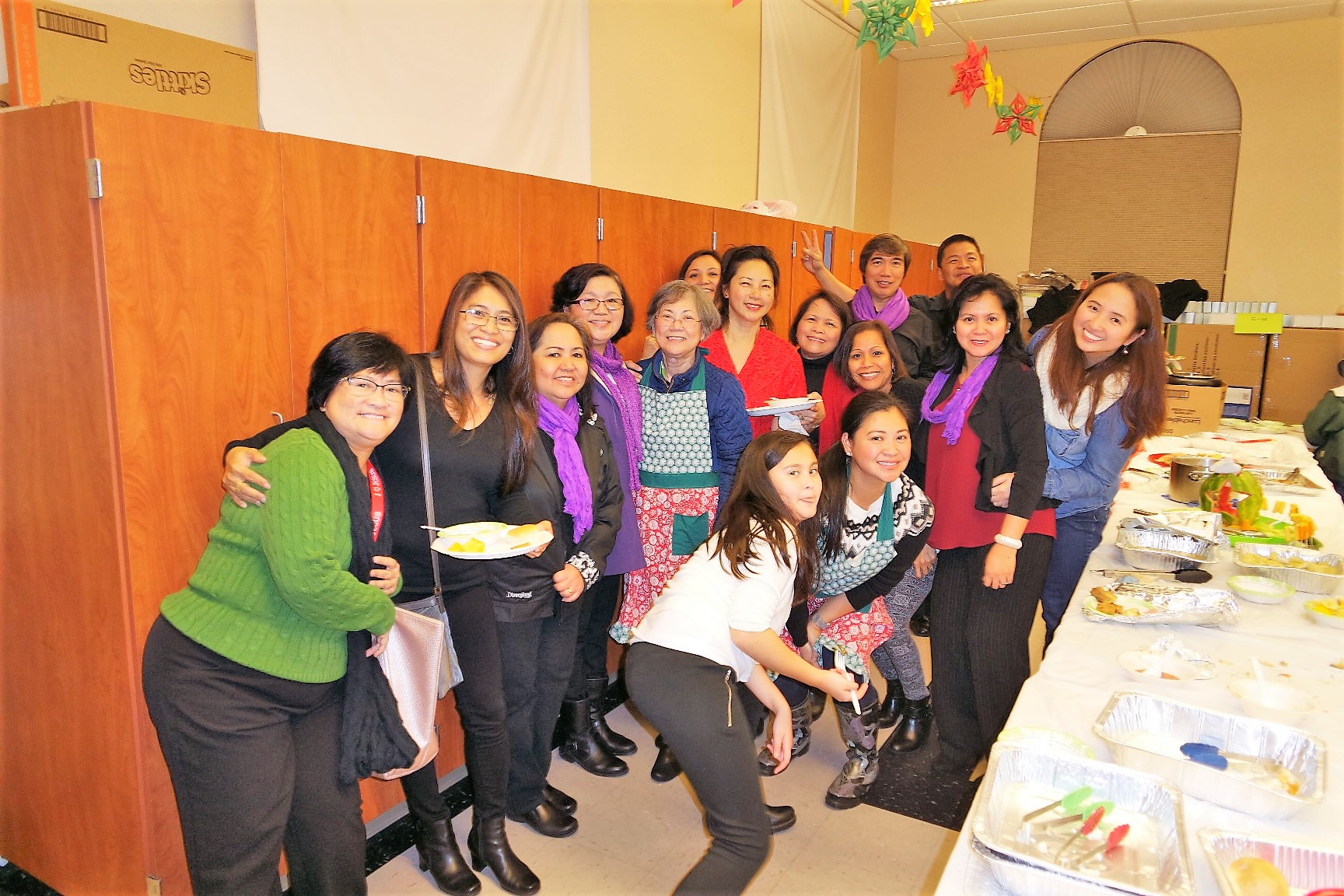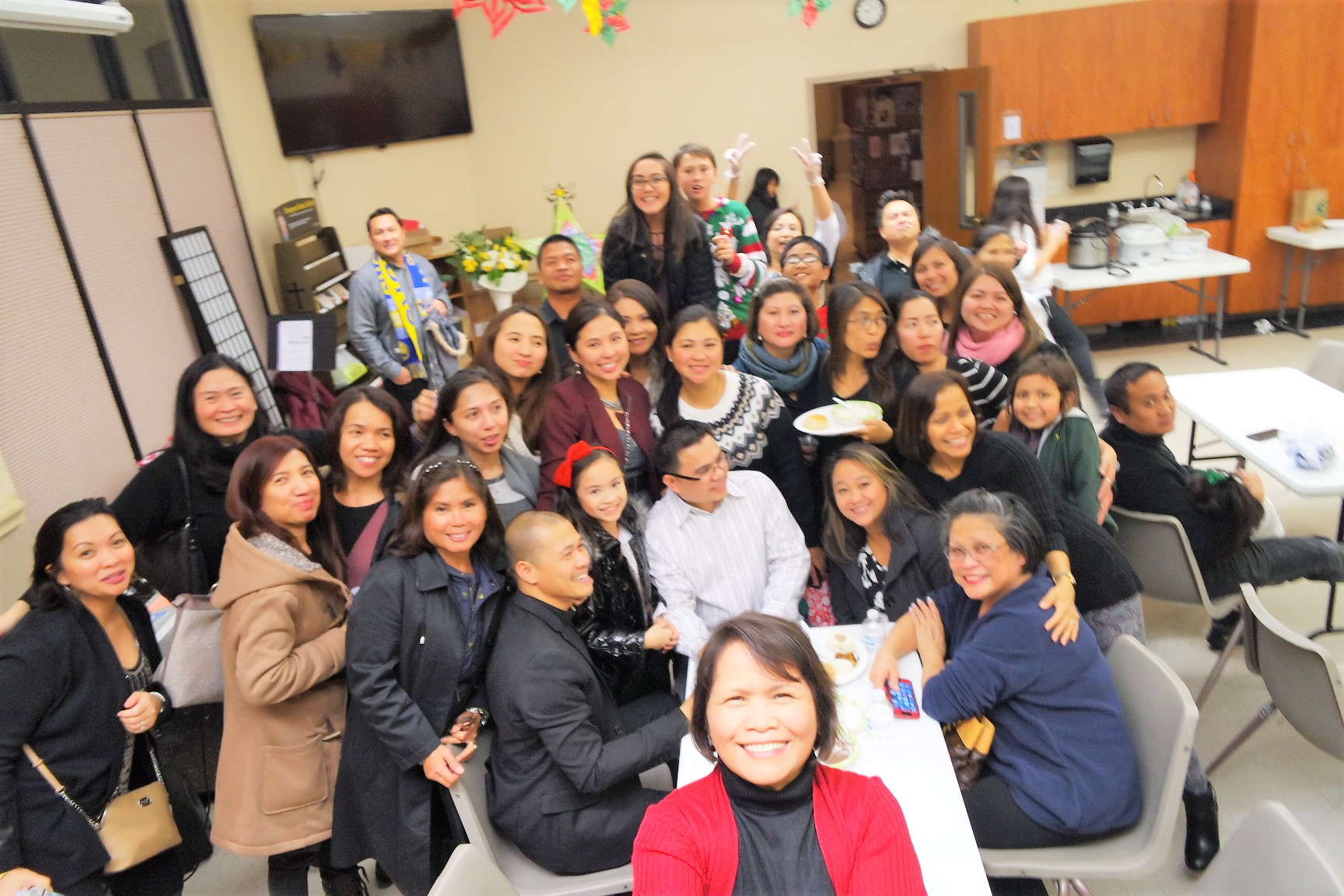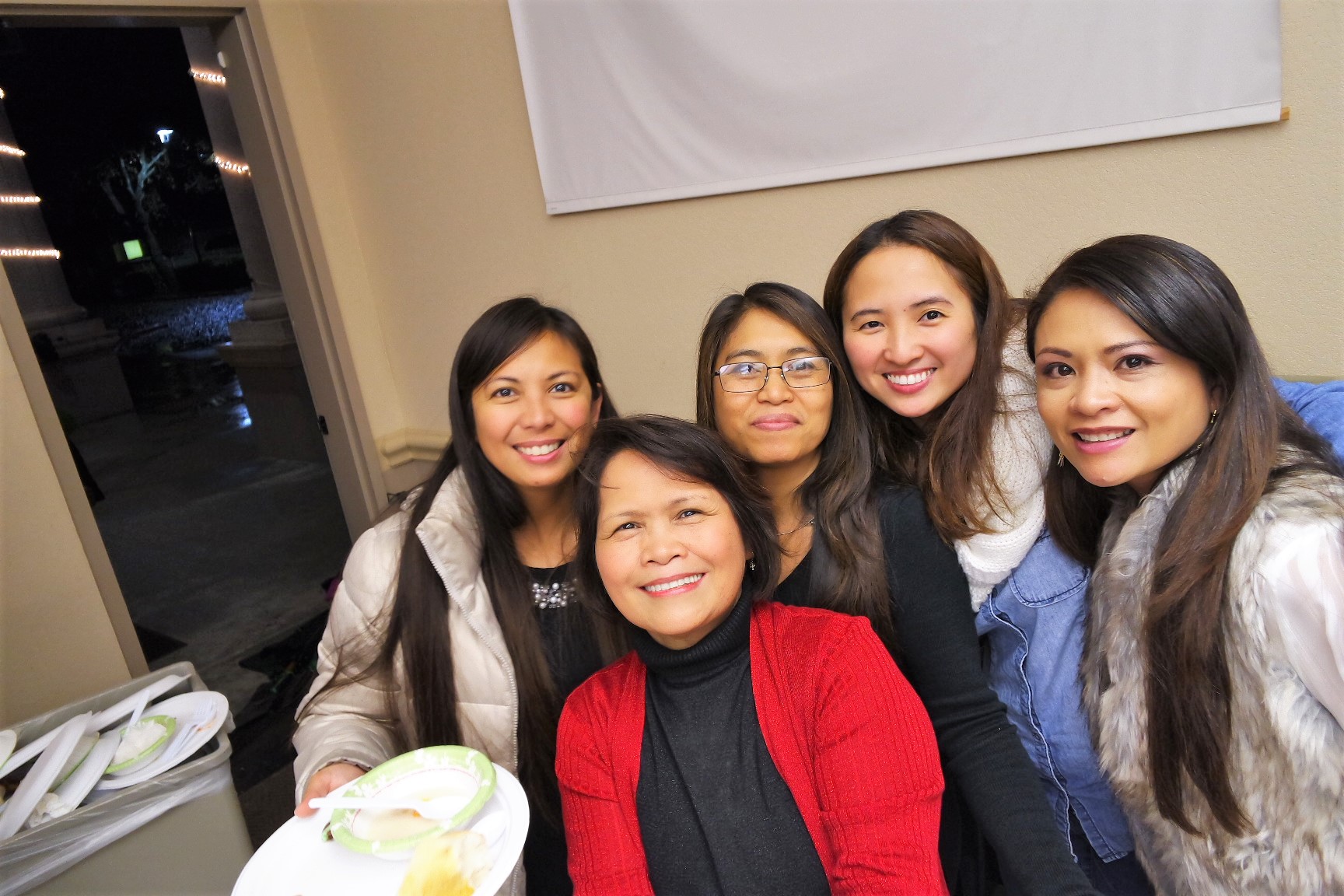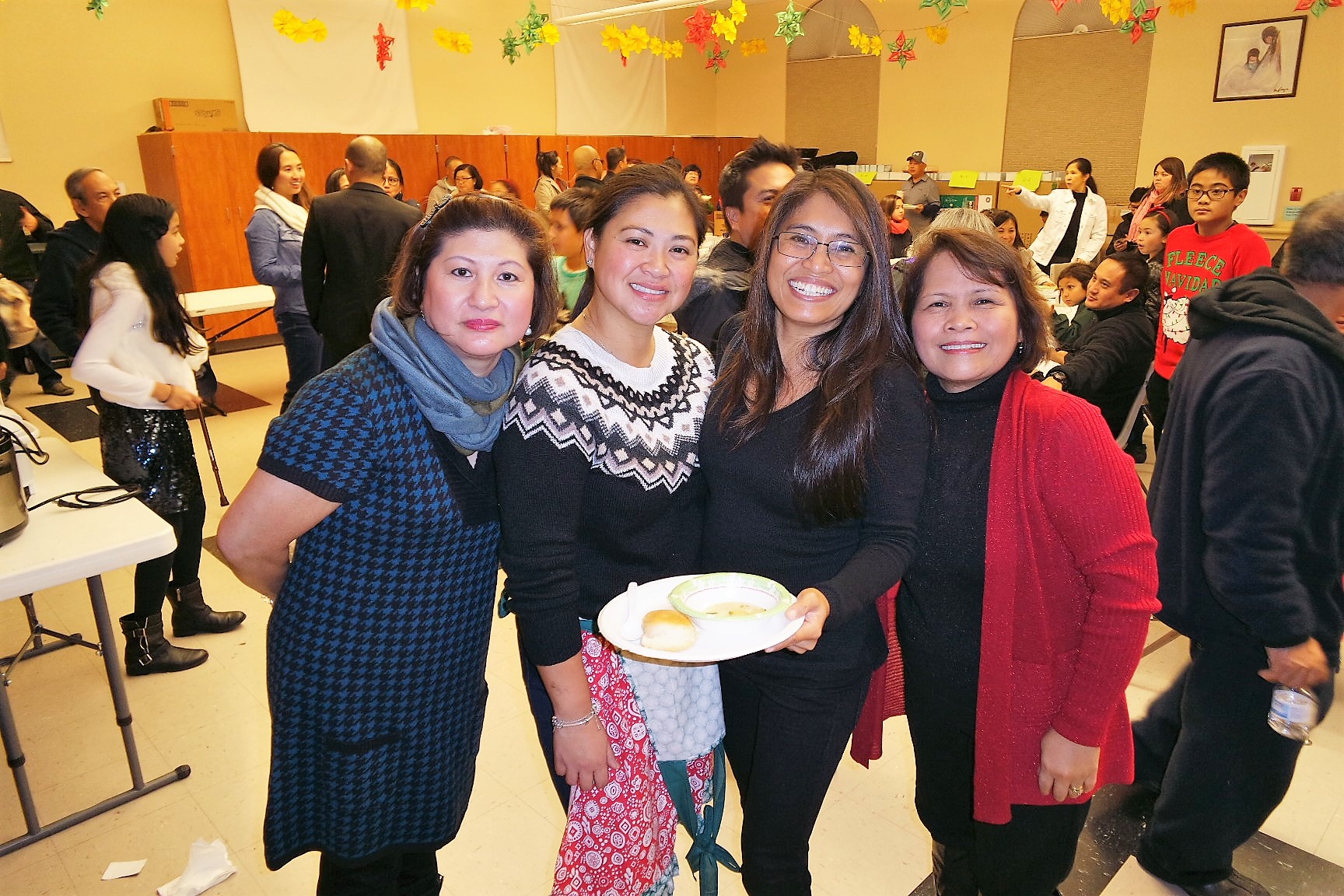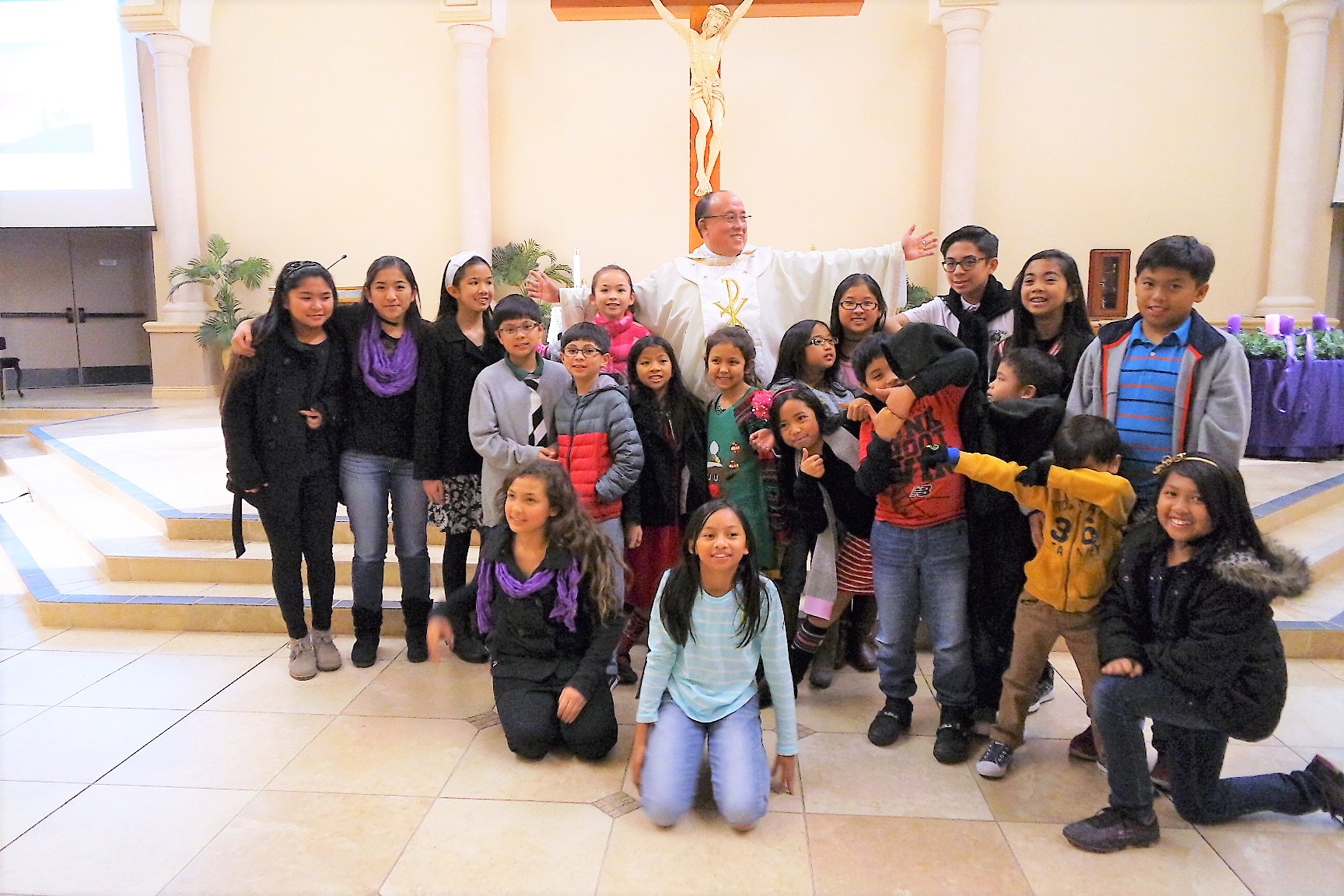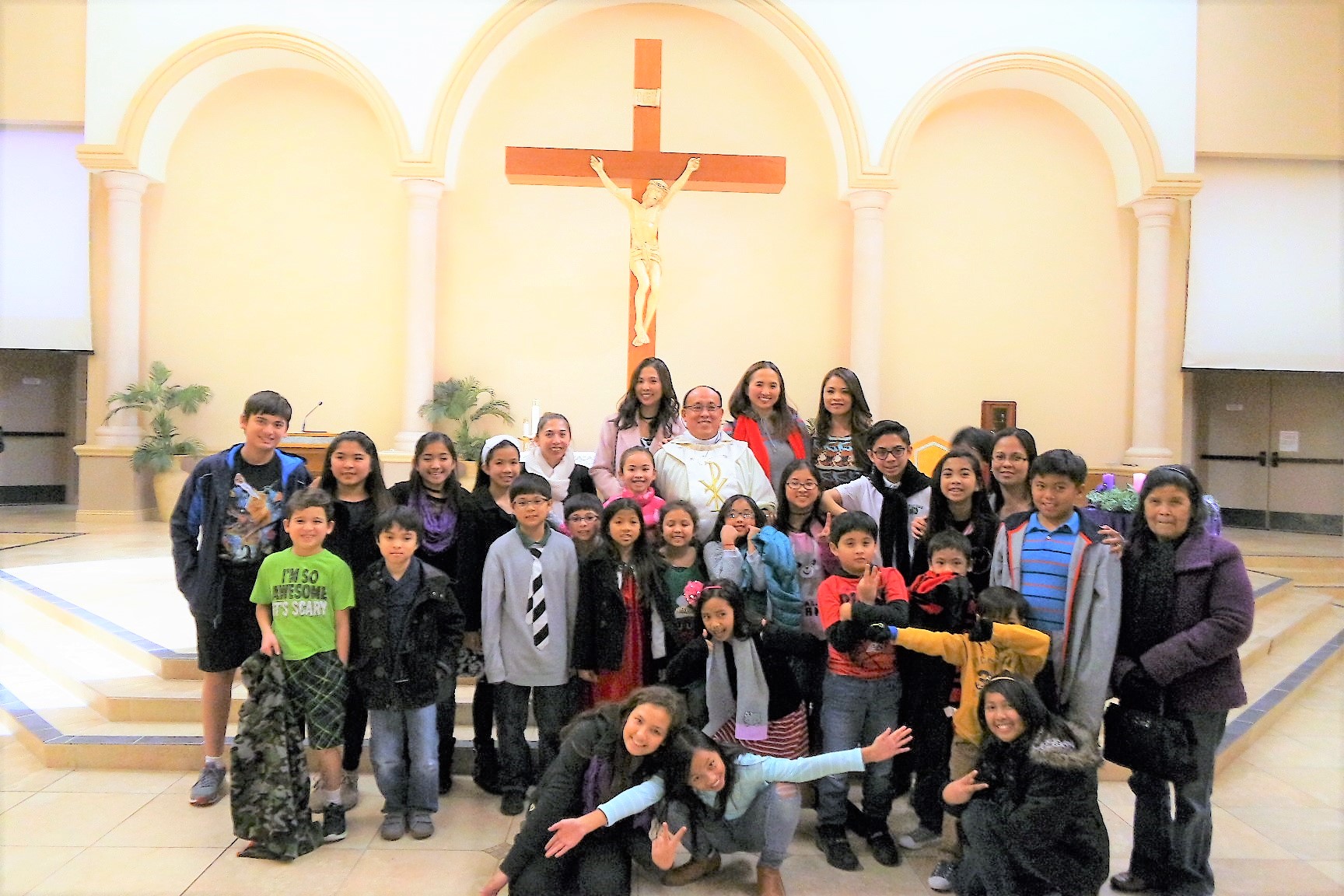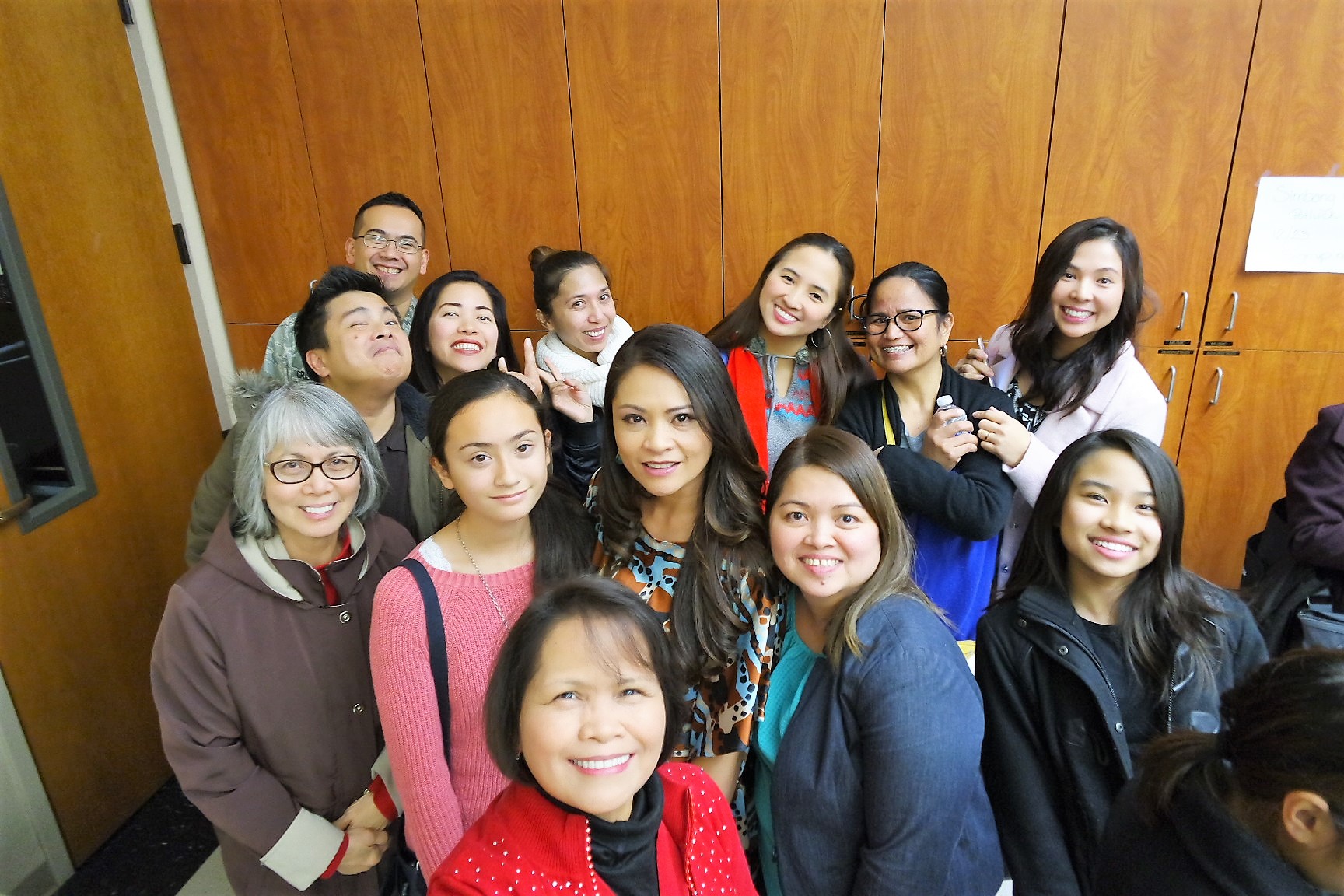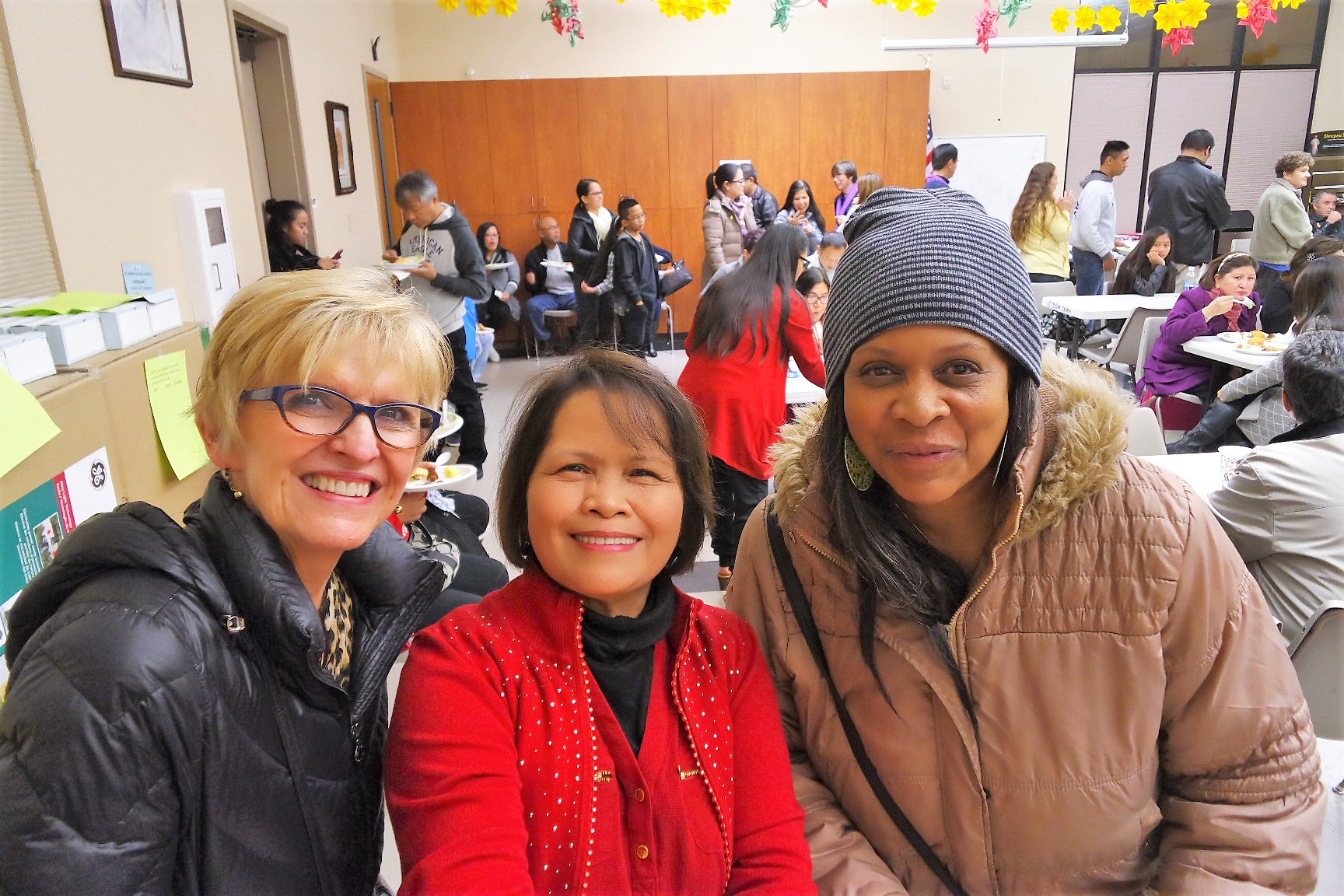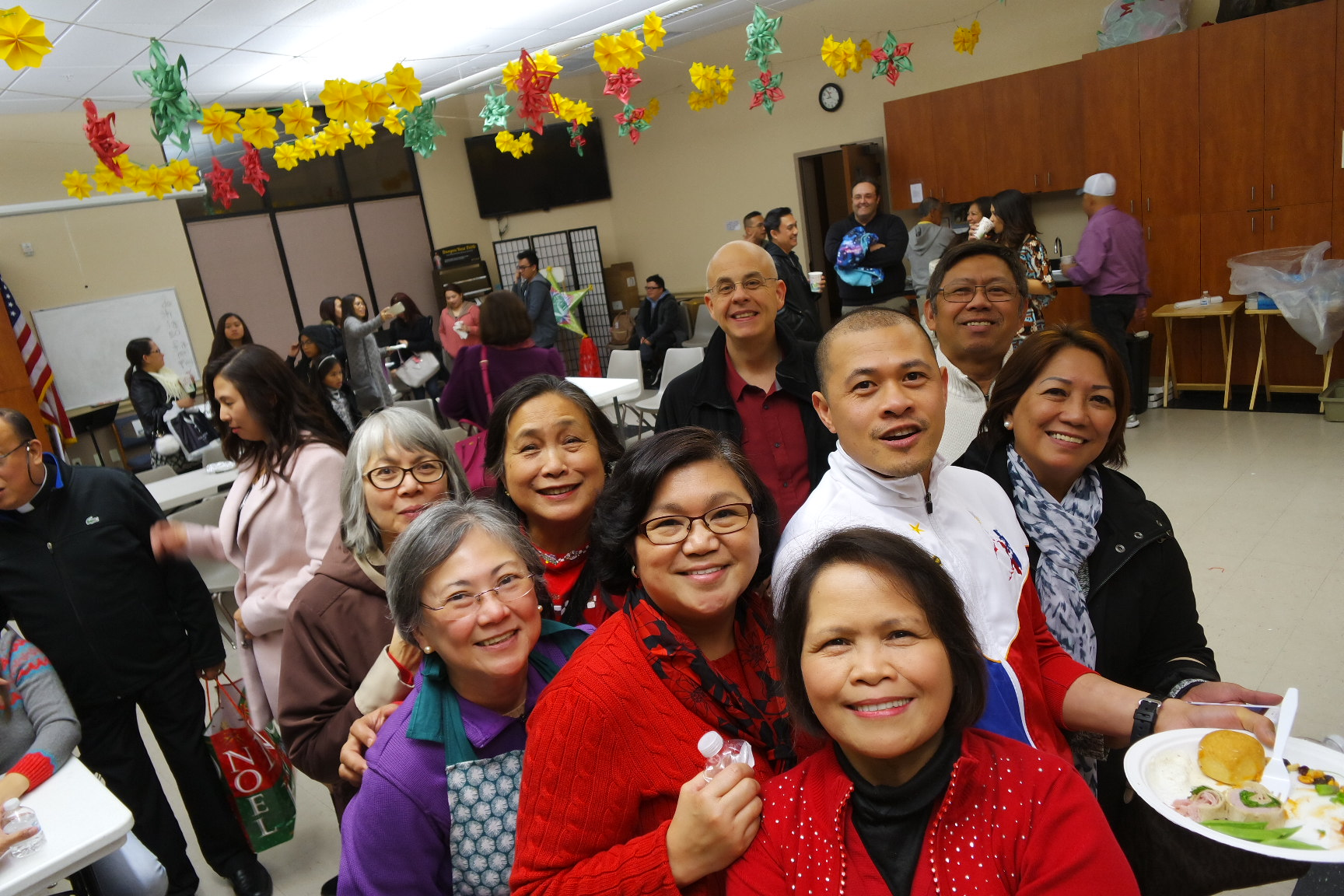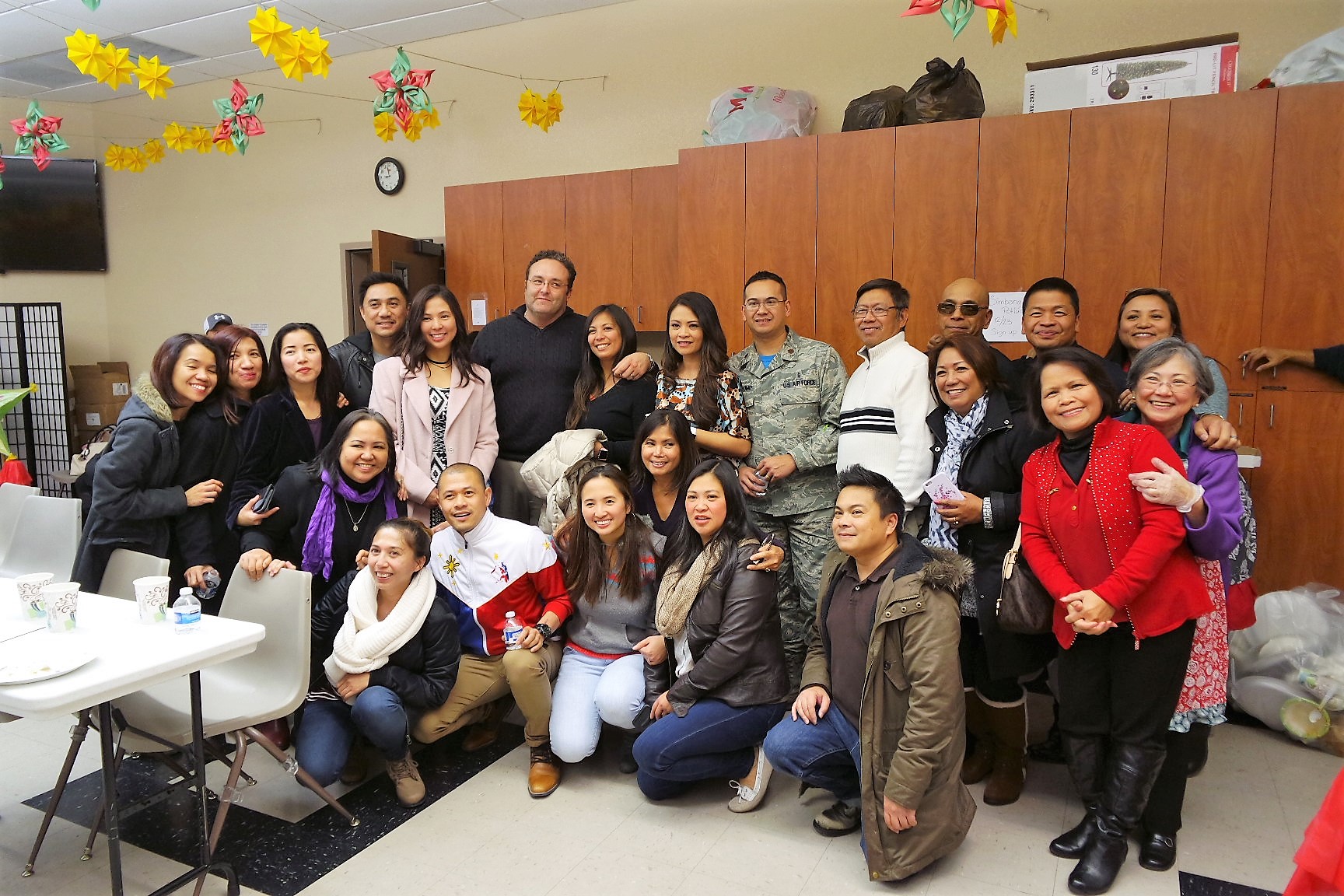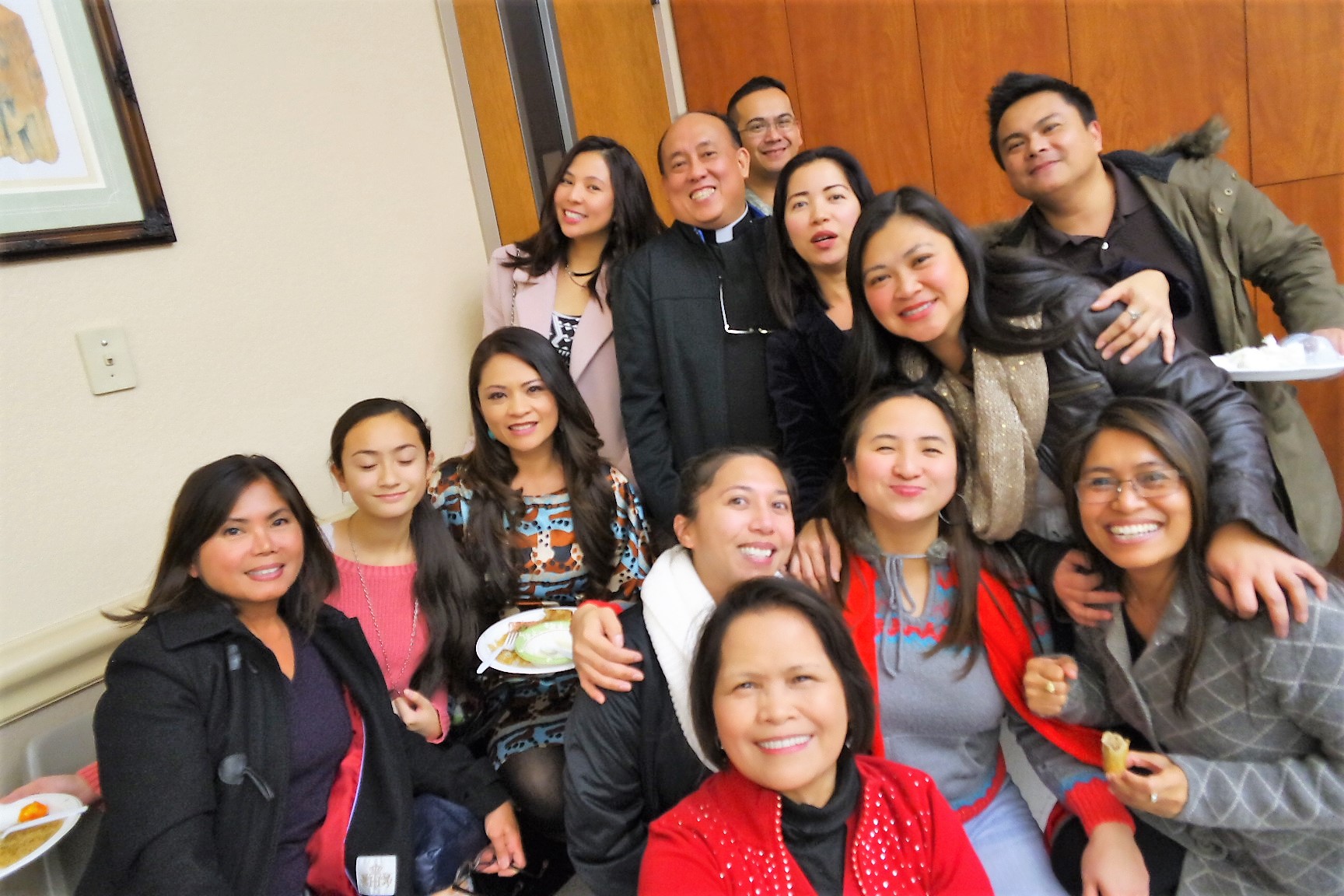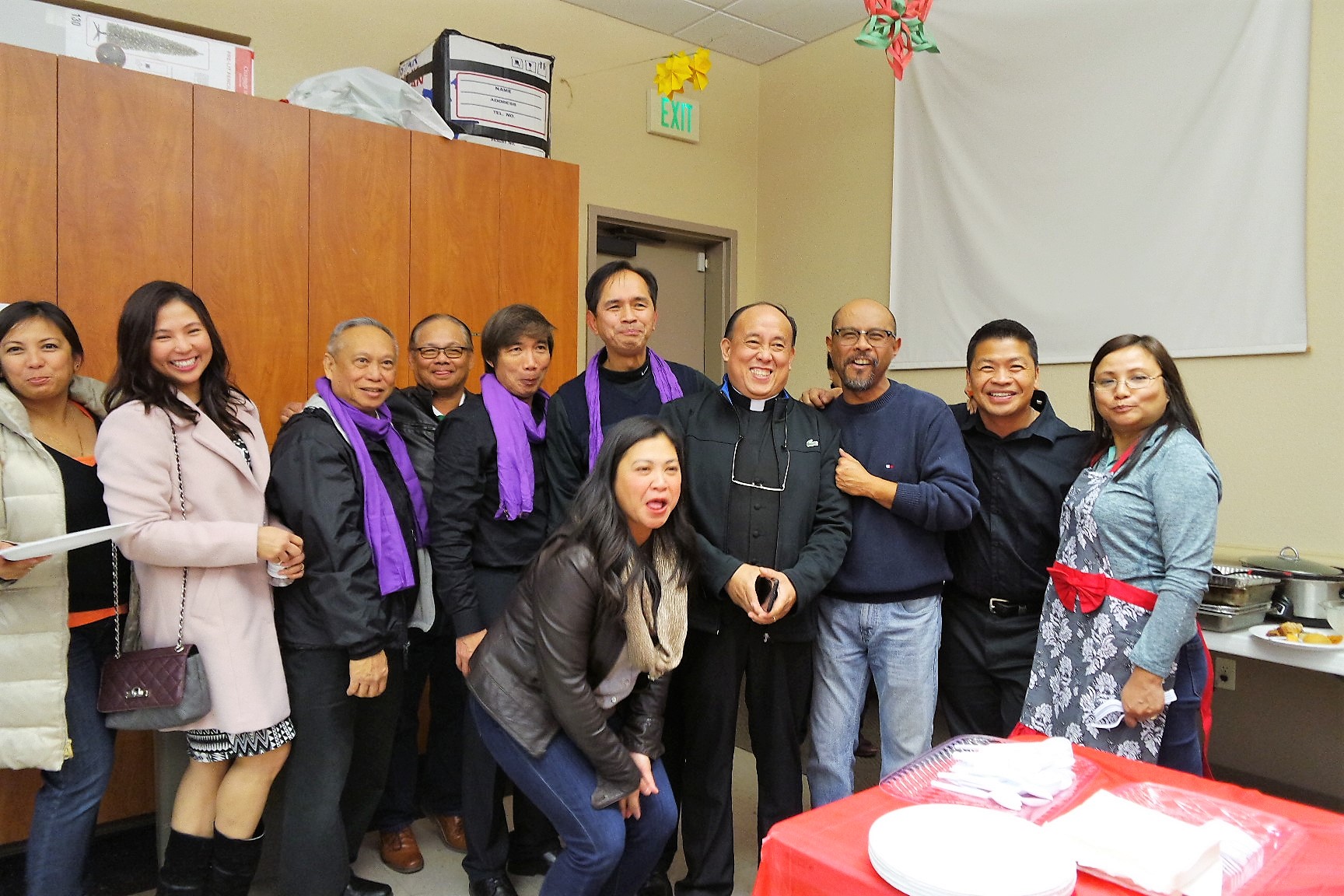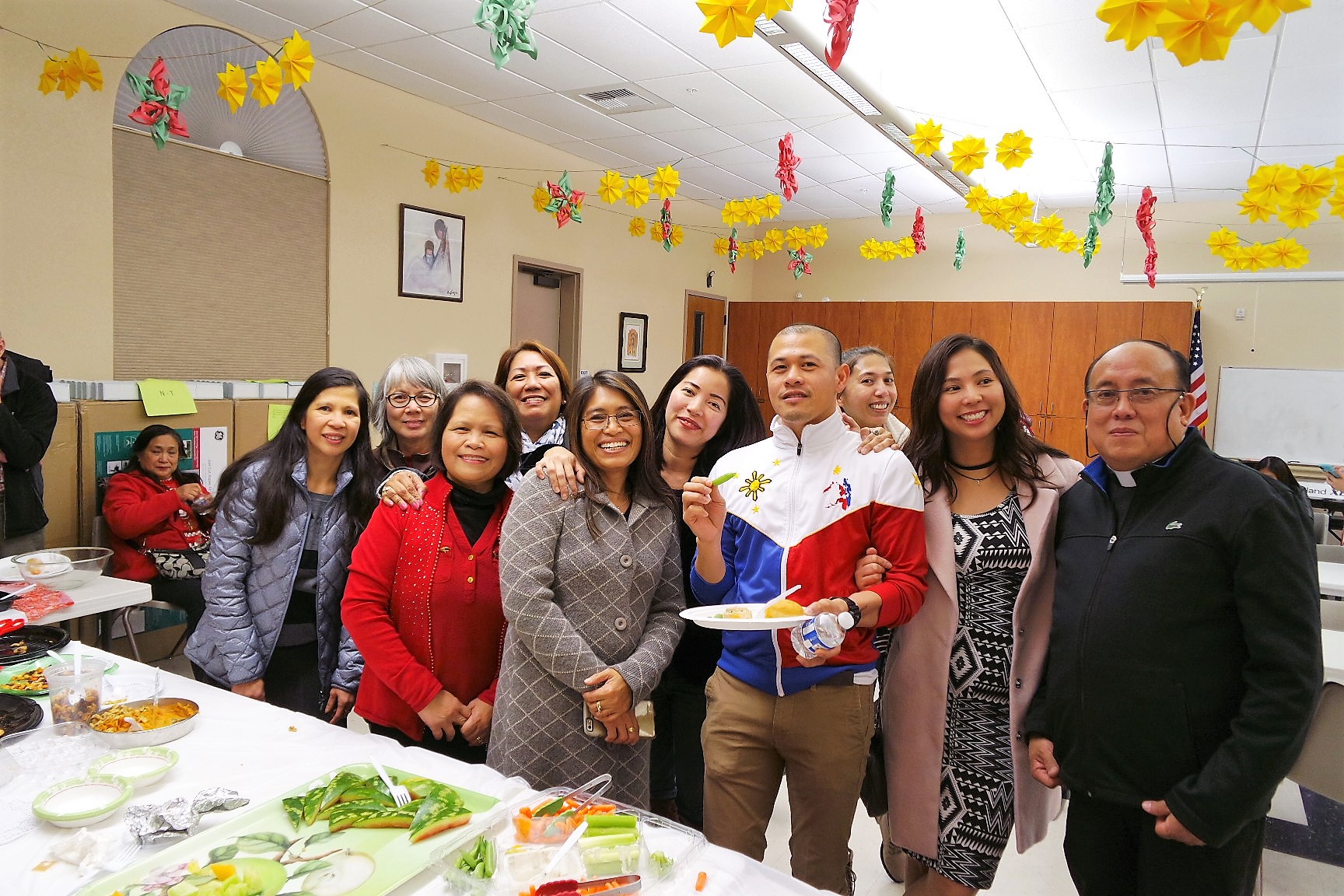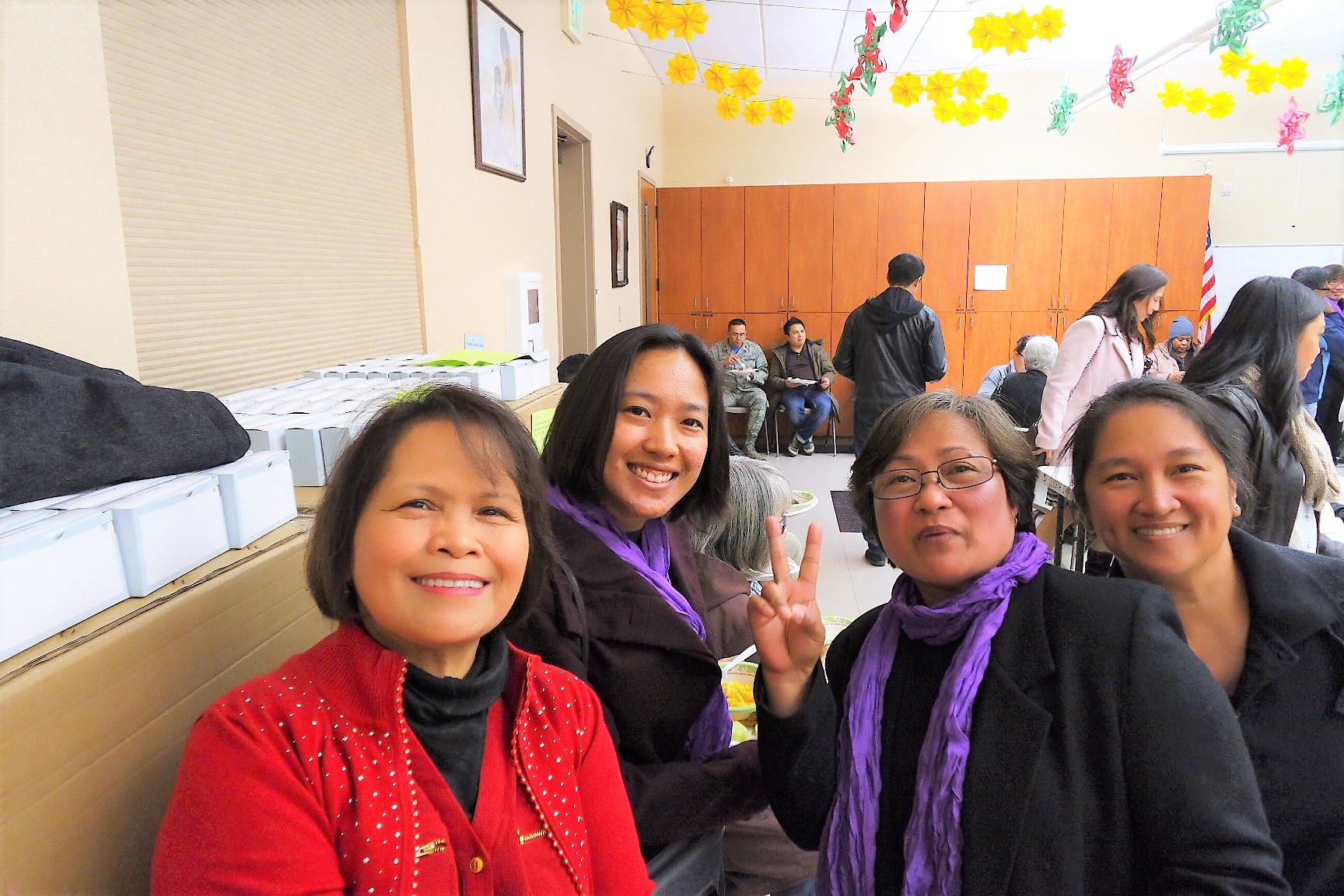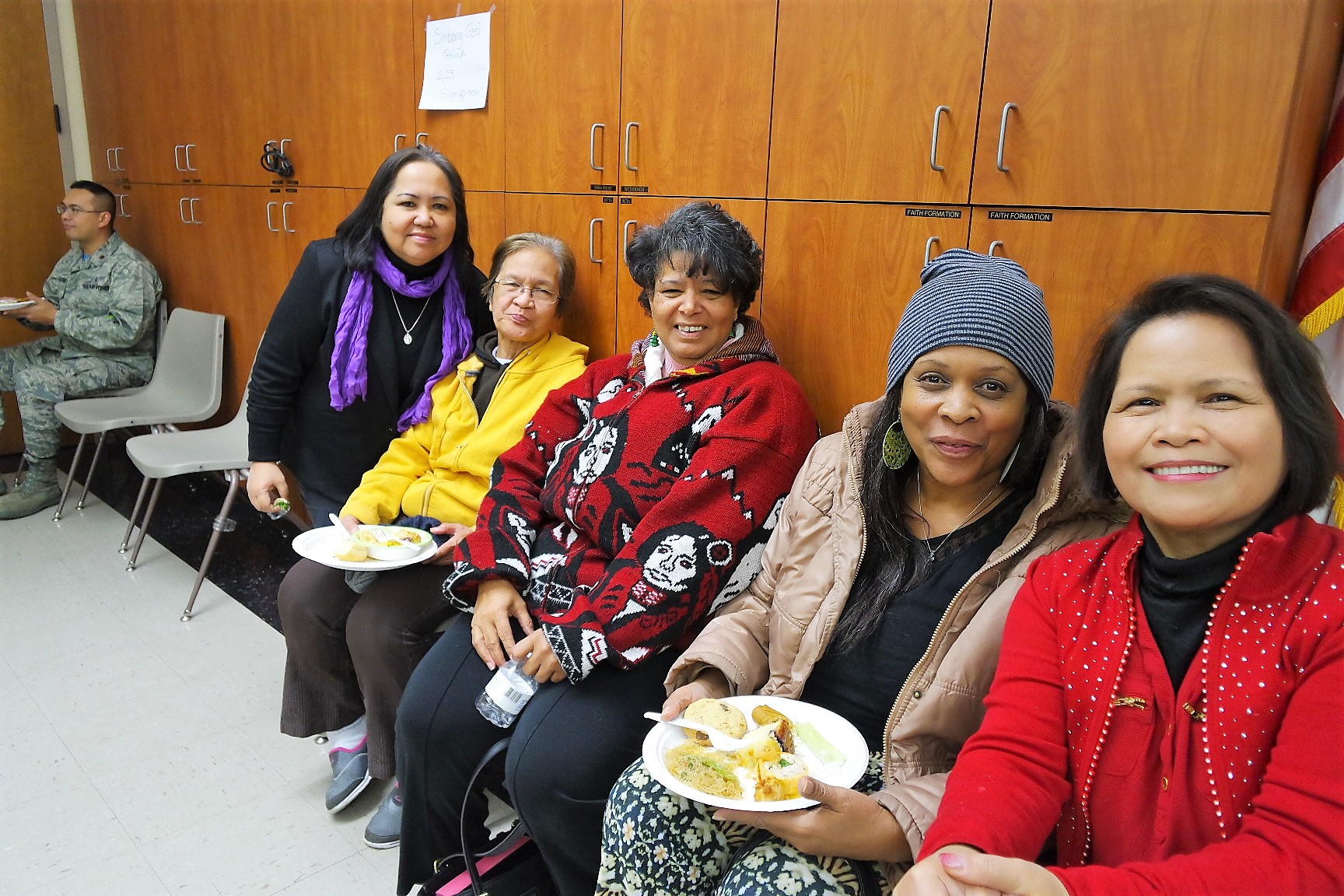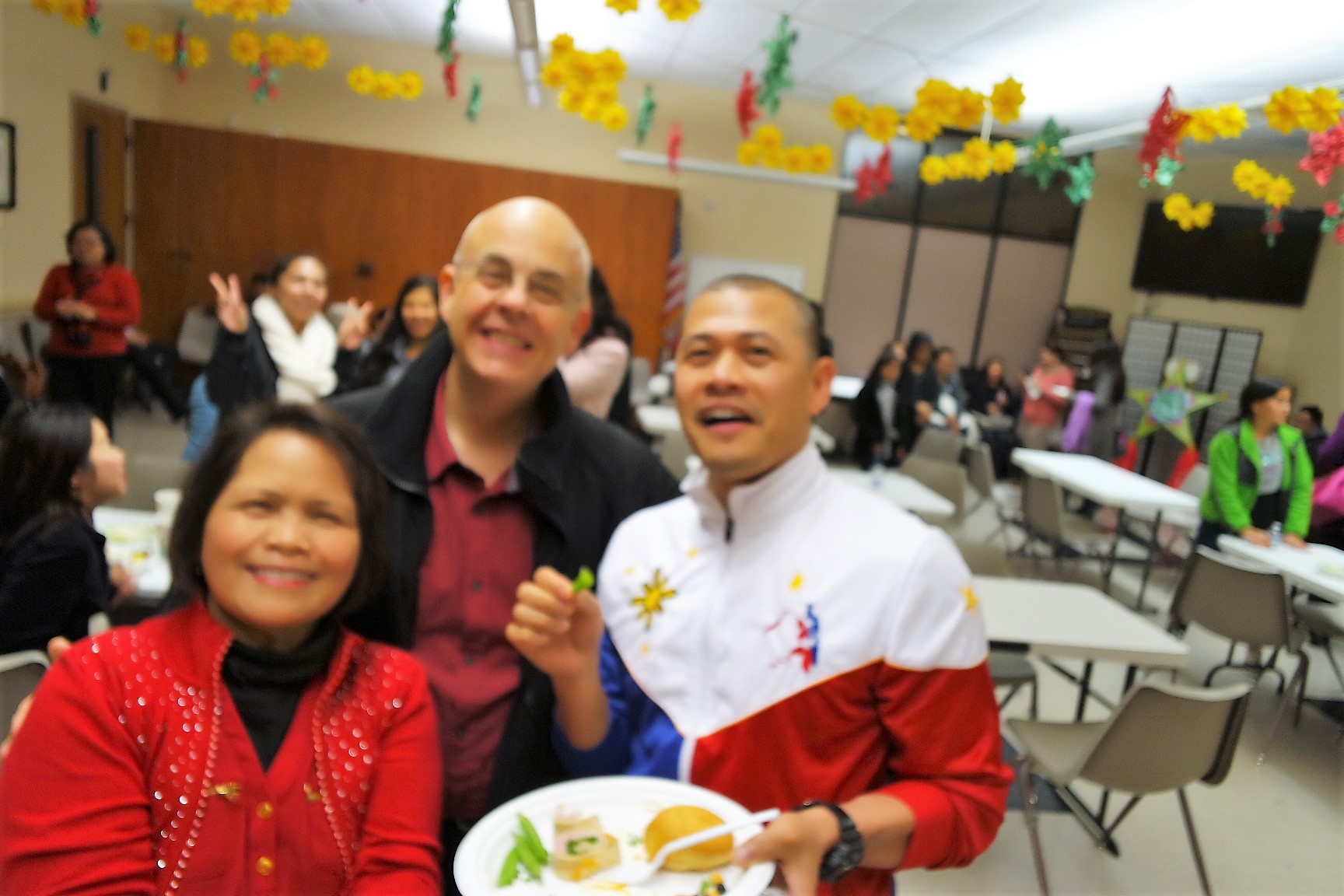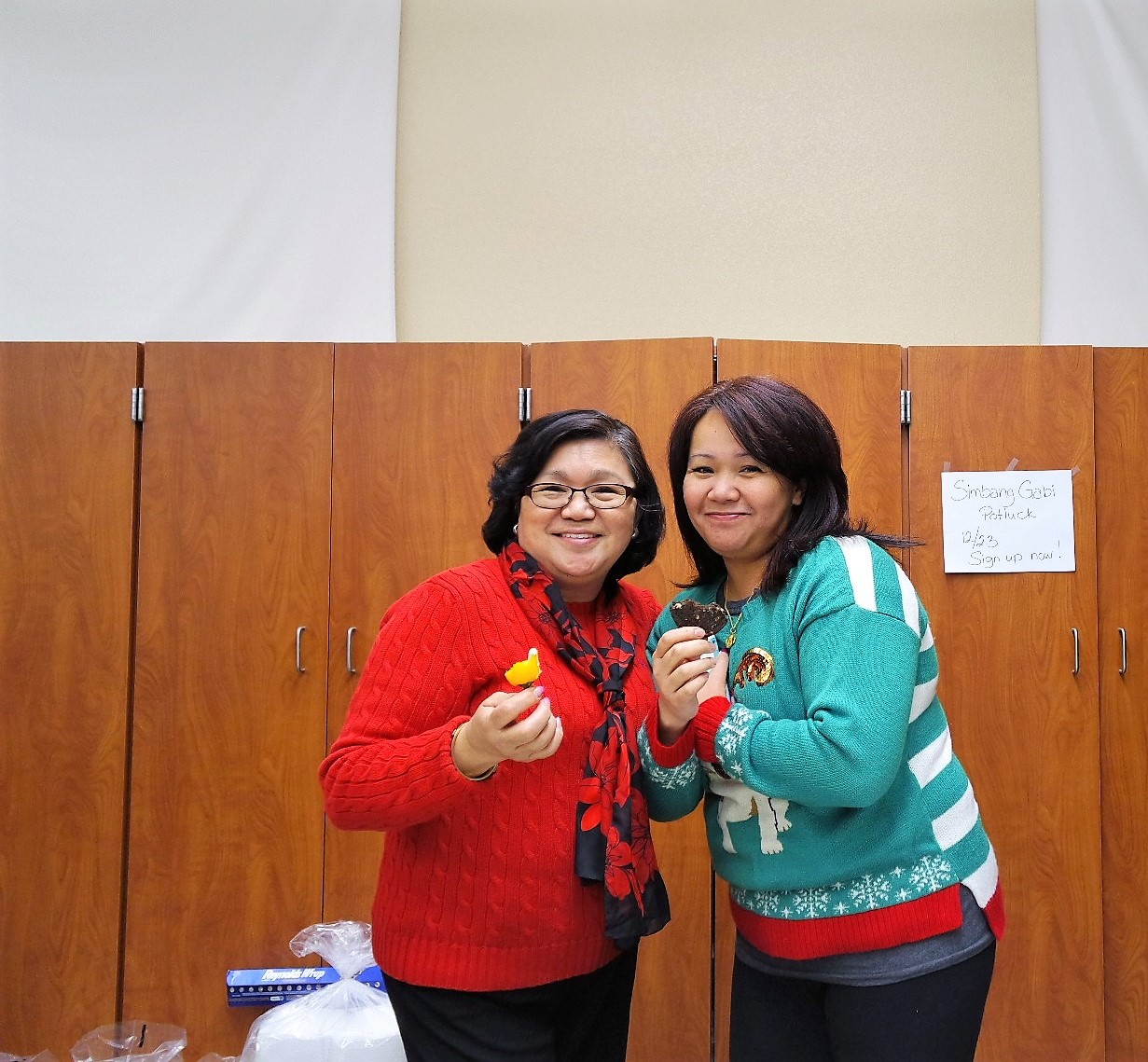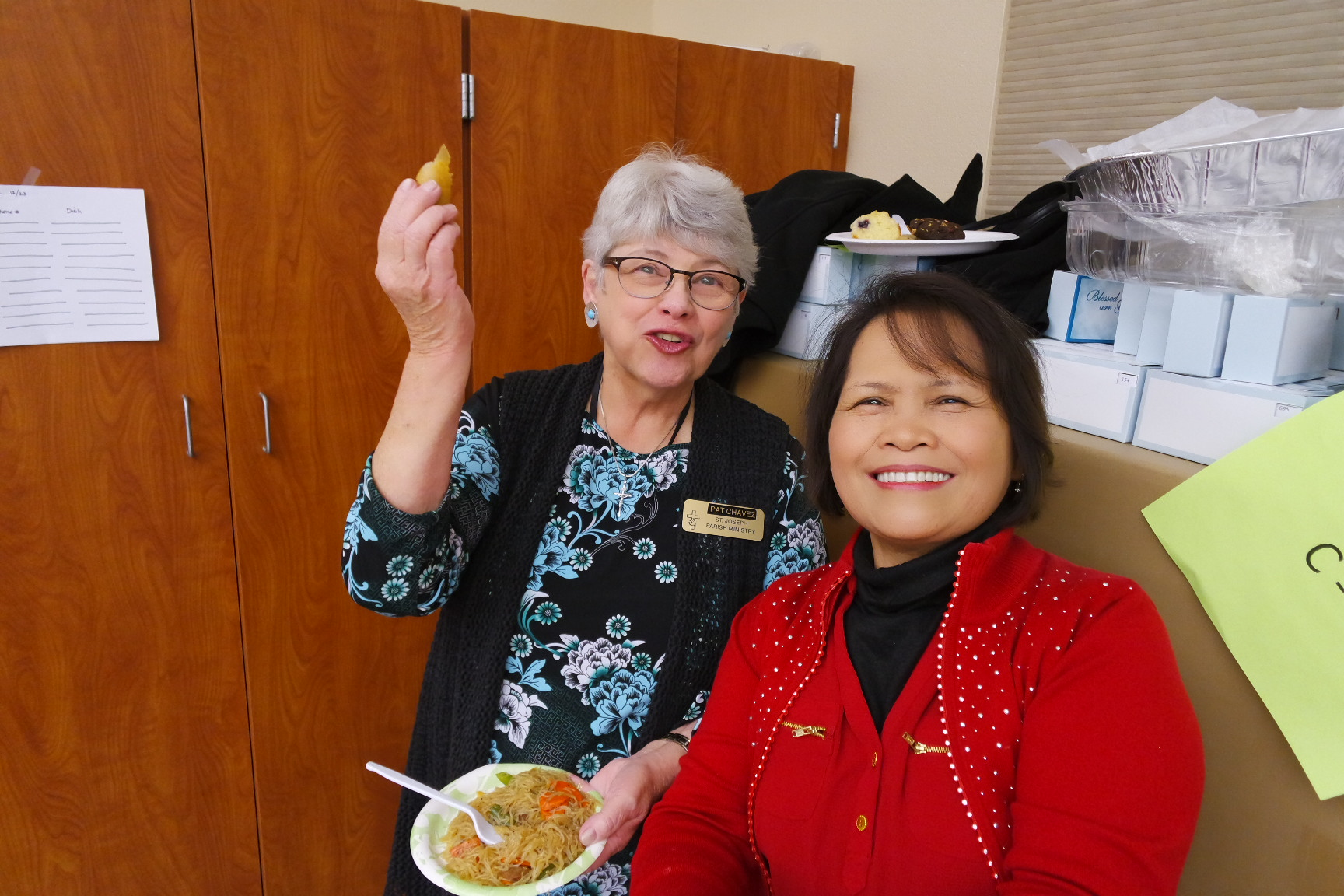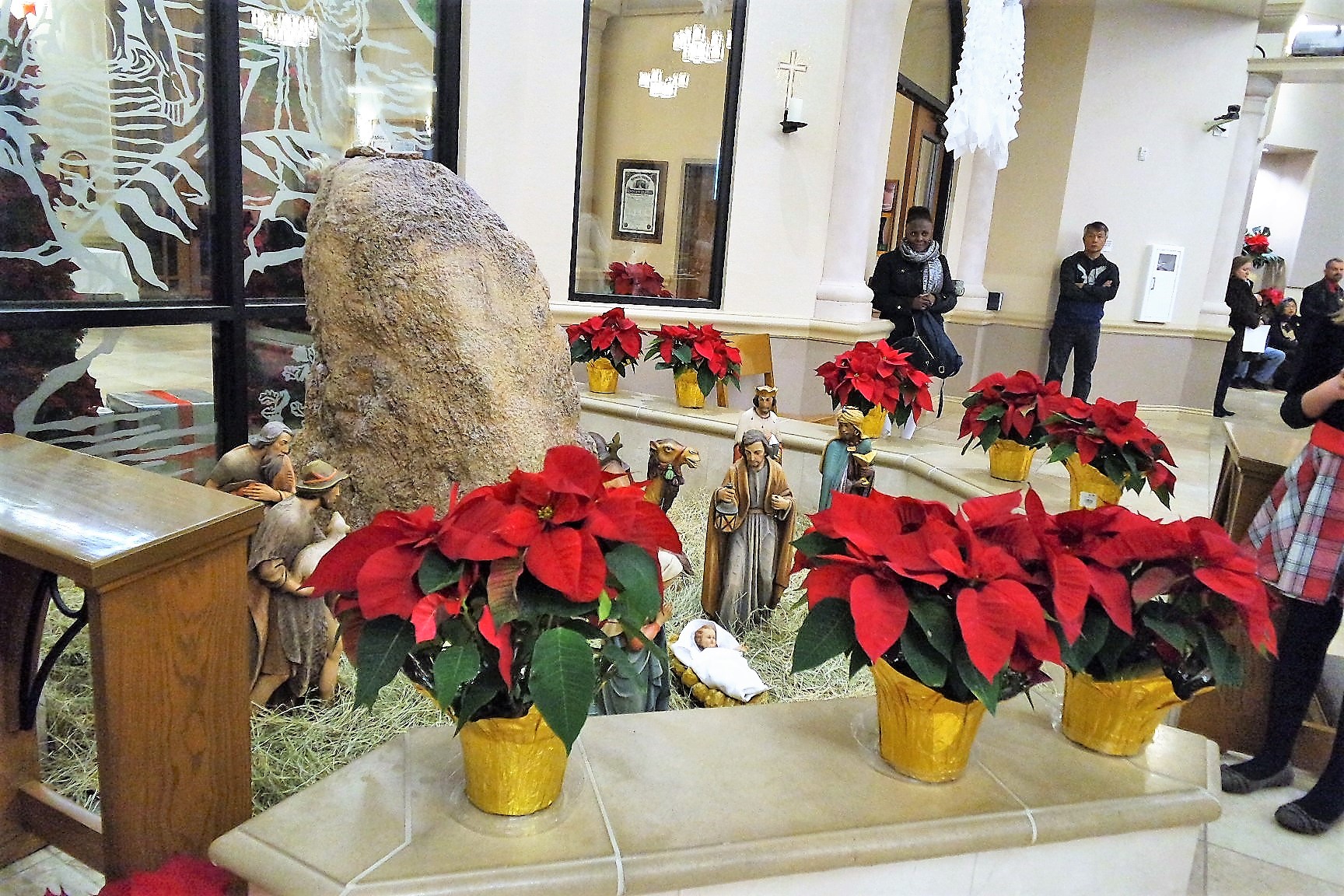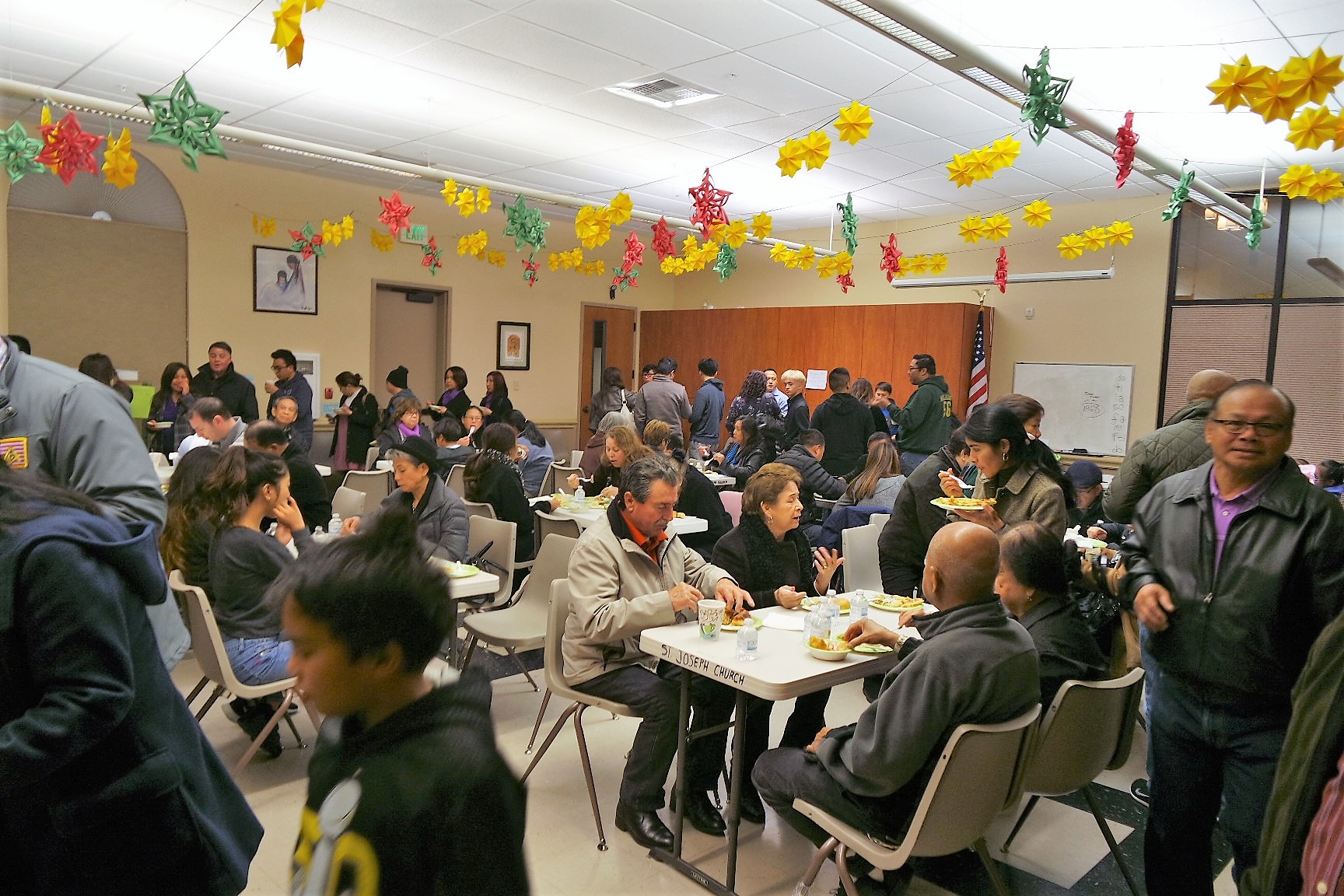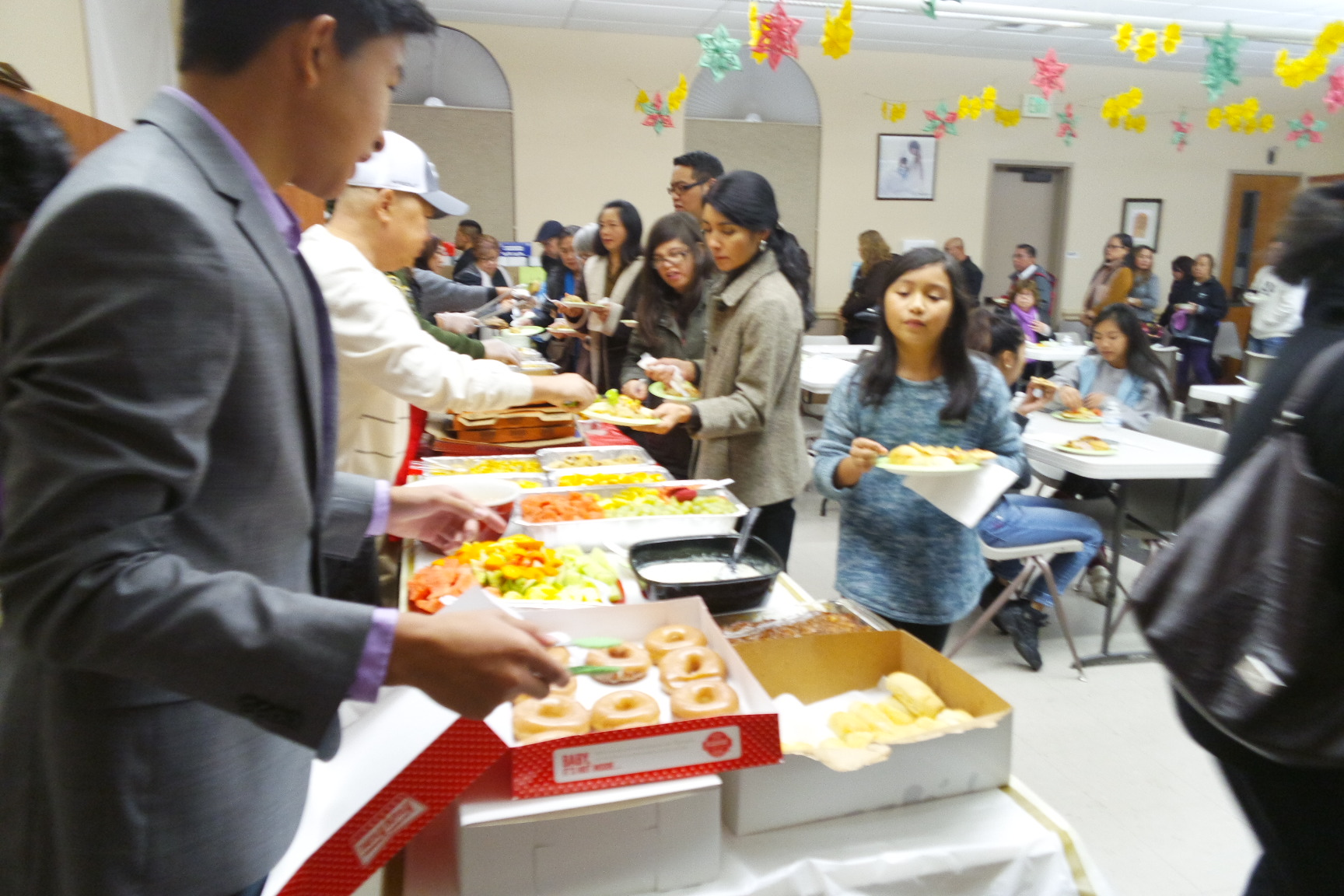Announcing the Good News! Come and join us as we
prepare for the birth of OUR LORD JESUS…
SIMBANG GABI CHRISTMAS NOVENA MASSES
What a great way to prepare for the birth of our Lord in our hearts by making time to attend the 9-day Simbang Gabi Novena Masses on December 15 – 23, 2023.
6:30pm Holy Rosary/Novena, followed by Novena Mass at 7pm.
6:30pm Holy Rosary/Novena, followed by Novena Mass at 7pm.
Let us come together and prepare to celebrate the birth of our Lord and bring the best of ourselves and our culture by preparing our minds, hearts, and souls for the Lord.
Advent is a Season of Hope and Anticipation
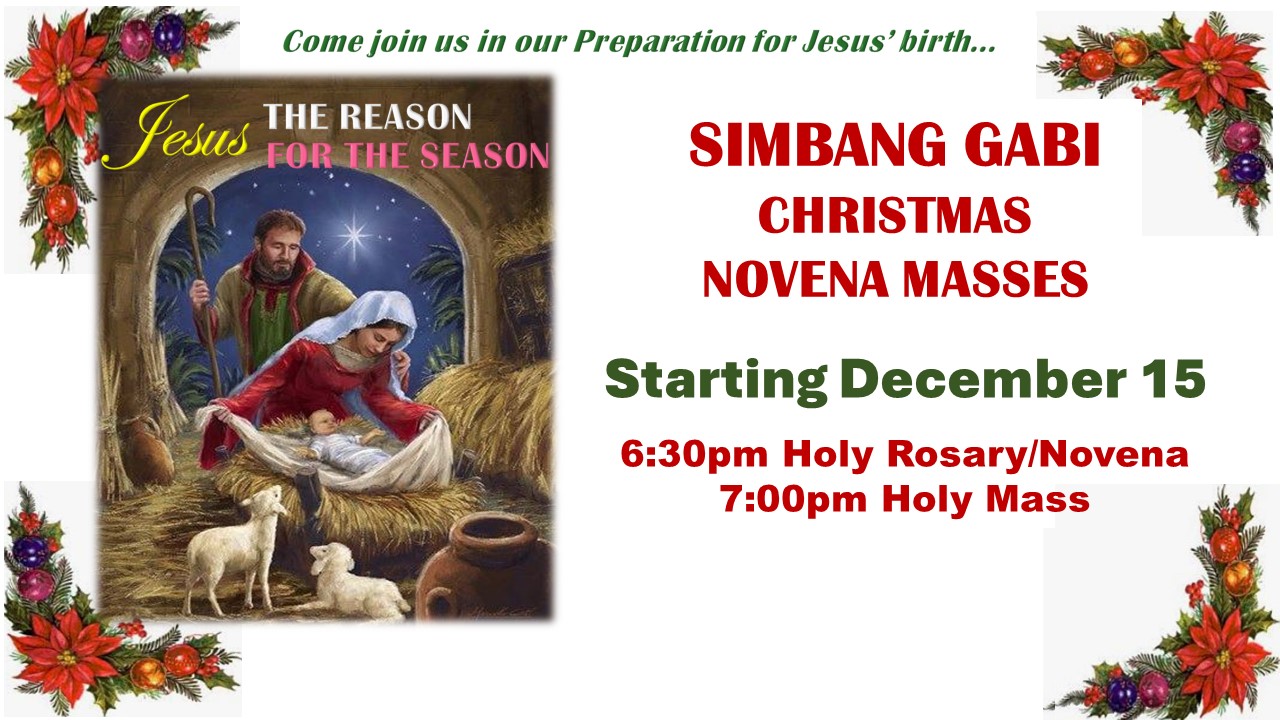
St. Joseph Parish
CHRISTMAS SCHEDULE
====================================
Simbang Gabi Mass Sponsors
What is Simbang Gabi?
Literally means “evening or night Mass.” As a devotional practice, it refers to the Philippine Catholic tradition of the novena, a series of nine evening Masses usually celebrated during Advent from Dec. 15-23, in preparation for Christmas Day. (In the Philippines, the dates are from Dec. 16-24, since Simbang Gabi is held in the early morning. Here in the U.S., the practice of the Simbang Gabi has been adapted to local conditions, with the Mass being moved to the evening hours for practical reasons.)
How did Simbang Gabi originate?
Simbang Gabi originated from the Missa Aurea (golden Mass or angel’s Mass) practiced by the Roman Catholic Church. This tradition was introduced by the Spanish friars at the start of the Catholic evangelization of the Philippine islands. In 1587, Friar Diego de Soria petitioned Pope Sixtus V for permission to have the Masses outdoors because the churches were too small to accommodate the crowds. The request was granted, and in the 17th century, the Simbang Gabi, or Misa de Gallo or Misa de Aguinaldo as it is variously referred to by the Catholic populace in the Philippines, became a permanent practice among Philippine Catholics. Also included in the indult granted by the pope was permission during the Mass to sing the Gloria and to wear white vestments to emphasize the joyful
anticipation of the coming of the Infant Savior in Bethlehem.
How is Simbang Gabi celebrated?
Originally, and the way it is still celebrated in most places in the Philippines, the Simbang Gabi Masses were held in the early hours of the morning at 4 a.m. or 5 a.m., when roosters crowed to announce the dawning of a new day, thus the name Misa de Gallo. This time of the day was chosen because most of the Filipino families were farmers and fishermen who either began or ended their day at daybreak. Farmers began working in their fields early to avoid the intense heat, while the fishermen who spent all night at sea came home in the early morning to sell their catch. At the first sign of dawn, local bands would start playing traditional Christmas carols around the town, and church bells would ring to summon everyone to the Simbang Gabi. Families walked to Mass passing by homes with flickering candles inside parols (star-shaped lanterns fashioned out of bamboo and colored paper to form a three-dimensional star in which a light bulb or candle is placed so it may glow as a symbol of the Christmas star of Bethlehem: “And behold, the star that they had seen at its rising preceded them, until it came and stopped over the place where the child was” Matthew 2:9b). Main features of the Mass were hymns and culturally expressive rituals and symbols, with star-shaped parols carried in procession and prominently displayed during Mass. After Mass, families and friends enjoyed the native delicacies spread out on the grounds around the church, strengthening social and spiritual ties within the community.
What does Simbang Gabi celebrate?
By the time of the Simbang Gabi, the somber waiting at the beginning of Advent turns into an eager and joyful longing for the coming of the Savior during the final nine days of Advent. This is best expressed by a Simbang Gabi ritual within the Mass when children process to the altar accompanied by an Advent song while bringing an offering of an empty manger, mantle, vigil candles, and flowers. This ritual symbolizes what is at the heart of the Advent season, humbly trusting and joyfully waiting for the arrival of the promised Savior. In the darkness of the night, all sing with joyful longing for the coming of the Savior who is the light of the world. Renew in all hearts the love of God and neighbor which is the true sign of your kingdom come!
Why is Simbang Gabi significant?
These are some reasons given by Filipino-Americans and those who are not. First, and foremost, it is a way for people to offer God worship and praise. Second, it is a way to express and develop personal spirituality by preparing the heart for the coming (Advent) of Christ at Christmas. Third, every nationality has developed religious customs and traditions they have brought and shared in America, thus adding another choice among religious practices for personal enrichment. Fourth, it is a way to develop community through a common effort of prayer, work, celebration, fellowship, and charity. Fifth, it helps maintain connections and unity with a country of origin – perhaps nostalgia for some – where the same practices are occurring at the same time in families and communities of origin.
How huge is Simbang Gabi?
This nine-day celebration symbolizes God’s desire to be human and the Filipino’s joy for that humanness. These are festive celebrations with Christmas carols sung before Mass, faith sharing, and, of course, lots of food afterward – a sample of Filipino food and refreshments is usually served at a reception following Mass. People dress in their finest Philippine barongs and dresses. Simbang Gabi is a religious festival for all, Filipino and non-Filipino. But no matter the language or dress, when you pray and sing during the Simbang Gabi, you realize how truly universal the Christmas spirit is. This is one of many cultural activities everyone can participate in and enjoy as a preparation for Christmas.
